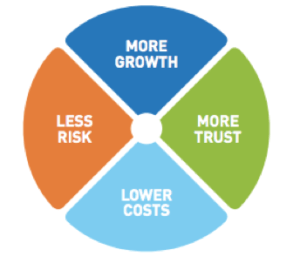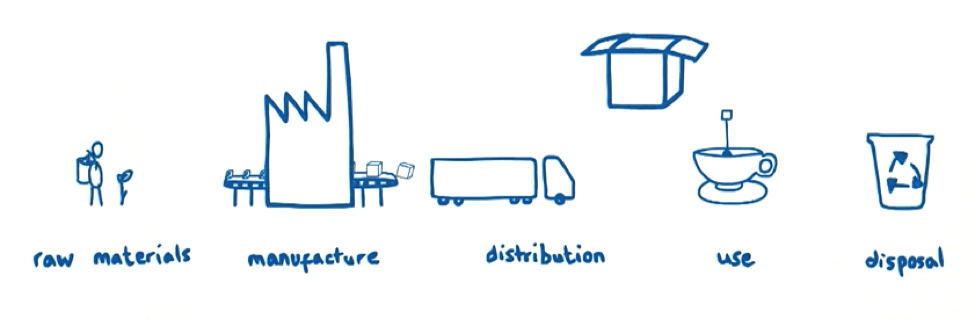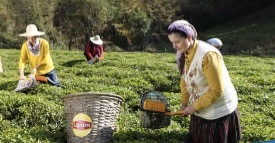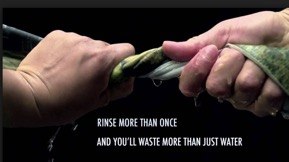Unilever: Takes on Climate Change by Selling “Sustainability”

In recent years, traditional businesses have embarked on a new journey to advocate eco-friendly manufacturing and branding. Unilever, with its enduring efforts to sustainability, has been put on the ‘A List’ by Climate Change Leadership for the fifth year. Why does climate change suddenly become a buzz word in the business world and how has Unilever adapted to climate change?
A Fresh Eye Toward Climate Change
Bigger Role Expected from Businesses
Over the past decade, public’s understanding of the global climate and economic system has changed dramatically. With it, the mind-set, roles and responsibilities of businesses have also changed in response to the requirements to operate efficiently and sustainably in this resource-constrained world.
Traditional companies, who used to see sustainability as an environmental or development issue, now understand it’s also a business and economic imperative. Last year, for the first time, the global economy grew without materially increasing carbon dioxide emissions. This signals and reconfirms that it’s feasible and inevitable for businesses to go down the pathway of sustainability.
Value Delivered by Sustainability
Unilever, in particular, has seen the benefit and value delivered by suitability in four aspects.
Exhibit 1: Unilever’s Four-point framework: Impact of sustainability on business success.
More Growth: Sustainability creates innovation opportunities, pushing the company to rethink product design and innovate in a world of finite resources.
Lower Cost: By cutting waste and reducing the use of energy, raw materials and natural resources, Unilever create efficiencies and cut costs, while becoming less exposed to price volatility.
Less Risks: Operating sustainably helps Unilever to future proof its supply chain against the risks associated with climate change and sourcing materials.
More Trust: Placing sustainability at the heart of the business model helps Unilever stay relevant to consumers, and strengthens relationships with stakeholders.
Unilever Sustainable Living Plan
Unilever has initiated a 10- year Sustainable Living Plan to double its business while halve environmental impact, by partnering with suppliers, customers and consumers throughout the “value chain”.
Exhibit 2: The Value Chain Defined in Unilever’s Sustainability Living Plan
Greenhouse gas, one of the biggest causes of climate change, is emitted by throughout the value chain. Zooming into each component of the value chain, it is clear that Raw Materials (29%) and Consumer Usage (61%) are the two biggest drivers for Greenhouse Gas emission. Unilever started several initiatives to reduce the volume of emission from those major sources.
Exhibit 3: Unilever Greenhouse Gas Footprint 2014-2015
Eco-sourcing: Drive Sustainability in Raw Material
Growing for the future, sustainable sourcing has never been more important. Unilever supported the initiative of sustainable agriculture – farming methods that minimize the impact to environment while increase yield.
Take Lipton, the world’s best-selling tea, available in over 100 countries with annual sales of around €3 billion, as an example. In 2007, Unilever became the first major tea company to commit to sustainably sourcing tea on a large scale. By now, 66% of Lipton’s total volumes are from sustainable sources.
Exhibit 4: Lipton Tea Plantation
Eco-packs: Loved by Consumers and Better to the Planet
Unilever is dedicated to continually innovate in order to reduce the amount of resources used in packaging, and focus on using lighter, stronger and better materials with a lower environmental impact. In the marketplace, it’s also often seen that Unilever launched concentrated or compressed versions of products to achieve the same or higher efficacy with less resources consumed.
Exhibit 5: Packaging Redesign Using Lighter Cap in Deodorant Product
Eco-education: Engaging Consumers on Sustainability
Unilever has a long history of using marketing and market research to promote behavior change through its brands. In recent years, sustainability becomes a “must-have” topic in most brand communications. For instance, Comfort One Rinse’s campaign explains to consumers that they only need one bucket of water for rinsing their clothes rather than three, helping them to save water.
Exhibit 6: Comfort One Rinse’s Campaign Communication
Looking into The Future – More to Expect? 
Exhibit 7: Halve Environmental Impact by Joint Efforts from Unilever, Supplier and Consumer
“It had been easier to achieve environmental targets directly within the company’s control, but it was now looking to develop more innovative solutions to reduce consumer energy use.” Said Paul Polman, chief executive of Unilever.
Two thirds of the Greenhouse Gas impacts in the value chain in consumer use, primarily heated water for showering and bathing. External factors such as decarbonizing energy grids and effective carbon pricing will also play a critical role in reducing Greenhouse Gas emissions. Progresses on climate change Greenhouse Gas reduction are highly correlated with consumer behavior and external factors. How will Unilever effectively tackles the challenge of changing consumer behavior? Will consumer buy into the concept of “sustainability” more than pure product functionality?
(Word Count: 777)
Endnotes:
[1] Unilever Sustainable Living Plan, https://www.unilever.com/sustainable-living/
[2] Why Sustainability Is No Longer a Choice (Op-Ed), http://www.livescience.com/53897-exclusive-unilever-ceo-on-sustainability-as-team-effort.html
[3] Climate change leadership puts Unilever on ‘A List’ for fifth year, https://www.unilever.com/news/news-and-features/2016/climate-change-leadership-puts-unilever-on-A-List-for-fifth-year.html
[4] Sustainability at Unilever – The Value Chain, https://www.youtube.com/watch?v=cpYhgqPRivw
[5] Unilever struggles to sell customers on Sustainable Living, https://www.greenbiz.com/blog/2014/04/29/unilever-struggles-sell-customers-sustainable-living









Great post! It’s an interesting point to raise that environmental impact extends beyond the operations of Unilever to the actions of both suppliers and end consumers. I wonder how coordinated their efforts are across brands and if certain brands are lagging behind the ones that seem like front-runners of sustainability like Lipton. In particular, I know Unilever owns a bunch of ice cream brands (like Ben & Jerry’s, Klondike, etc.). I would imagine that the refrigeration required to sustain an ice cream supply chain and retail operation creates a substantial negative environmental impact. That being said, I do really like ice cream 🙂
Nice article, thanks for sharing. Overall, Unilever seems to be doing a great job within the company. Although you (and Unilever) highlight a few examples of Unilever’s sustainability efforts outside of the company, I remain skeptical that these are exceptions within the organization. Specifically, I would love to dive deeper into their biggest supply chain partnerships and see how they are maintaining a “sustainability promise” — or if they only do so when it is financially convenient. On the consumer end, I would be interested to see the level of effort by Unilever to develop products that encourage more environmentally friendly behaviors. For example, wash detergents that are more effective in cold water. Overall, great article about a company that is an industry leader in climate change.
Great post, Kelly! In addition to the Comfort One Rinse, am curious how Unilever is trying to affect customer behavior. If the use phase does in fact contribute to 61% of energy emissions, how can Unilever design products that encourage customers to use less water and energy? How can they educate consumers? I am also curious about Unilever’s chemical management goals. I am always astounded by the number of chemicals contained in any hygiene or beauty product at CVS, and wonder how these chemicals affect our water sources in both the production process and use phase. Since Unilever has such a wide variety of products, I am curious how they have infused sustainability into their business practices and supply chain. Are there employees in explicit sustainability functions setting goals and monitoring progress? Or are employees in all business functions required to engage in sustainability work?
Great to see that Unilever is implementing several initiatives like sustainable agriculture to reduce the negative impact on the environment. I would be curious to learn more about these sustainable agricultural practices and how they are convincing agriculturists to adopt sustainable methods. I’m sure they are facing the same dilemma that IKEA is facing in terms of incentivizing all key players in the supply chain. It’s also great to see that Unilever is engaging in campaigns to educate the end user. I remain skeptical about the efficacy of these campaigns since it’s hard to motivate users to change their behaviors. I wonder if these campaigns and ads would be more effective if they are paired with grassroots campaigns.
I enjoyed learning about Unilever’s efforts in the realm of sustainability, and this article was very interesting. At DuPont, I saw similar efforts at engaging consumers on sustainability like Unilver. DuPont made internal requirements restricting when marketing departments were allowed to use the word “green” with product marketing. Sustainability had become a “must-have” and people were using the word “green” too much. Another interesting point from the article was about supply chains. I have heard of companies reaching up the supply chain in order to make their supply chains more sustainable (like the IKEA case in TOM), but I have not heard that much about companies reaching down the supply chain to change consumer behavior. Thank you for sharing, and good job at clearly laying out what Unilever is doing to both fight climate change and take advantage of the business opportunities this fight provides.